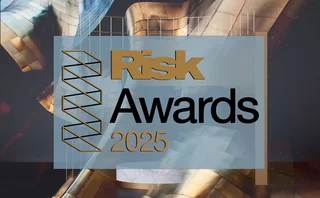
Big four consultants help banks jump through CCAR hoops
US banks relying on small group of consulting firms to complete Fed's annual stress test

When the results of this year’s Comprehensive Capital Analysis and Review (CCAR) are published on June 29, the focus will be on the impact for US banks. But behind the scenes, much of the heavy lifting will have been carried out by a small group of consultancy firms, say industry sources.
Bank holding companies with total assets of at least $50 billion are required to participate in the CCAR exercise – also known as the Fed 'stress test' – which is held annually by the US Federal Reserve Board. This year, the spotlight will fall on 33 banks, many of which are relying to a large extent on consultancies.
London-based EY and New York-based Oliver Wyman are the most widely used consulting firms for CCAR, say several industry sources. "EY and Oliver Wyman have particularly strong CCAR practices," says the head of CCAR at one US bank.
The two firms have worked with almost all the banks that have been involved in the CCAR exercise since it was launched in its current form in 2011. Each firm claims to have worked with around half the banks participating in the 2016 CCAR exercise. However, New York-based PwC and Netherlands-based KPMG also claim to work with dozens of CCAR banks on their submissions, and it is not uncommon for a bank to engage two or more firms due to the amount of work involved.
"CCAR is such a large and comprehensive exercise that it's rare that one firm is going to handle everything," says Til Schuermann, partner in the finance, risk, and public policy practices at Oliver Wyman.
There are situations where a bank uses multiple consultants within its CCAR programme
Adam Girling, EY
"The larger banks have multiple work streams, and are going to look for more support," says Adam Girling, principal in the financial services practice of EY. "There are situations where a bank uses multiple consultants within its CCAR programme."
Each of the firms employs hundreds of professionals dedicated to CCAR. The consulting firms have hired scores of additional staff for their CCAR practices. Those employees have a broad range of experience in data, modelling, documentation, validation and verification, and many also have regulatory backgrounds.
Prior to joining Oliver Wyman in 2011, Schuermann was a senior vice-president at the Federal Reserve Bank of New York, where he served as head of credit risk in bank supervision. In 2009, he helped design and execute the Supervisory Capital Assessment Program – the early predecessor of CCAR.
The head of PwC’s risk advisory practice for financial services is Mike Alix who, prior to joining the firm in 2014, was also at the New York Fed. There, he was active in developing the CCAR programme and led key components of Federal Reserve system-wide supervision, including oversight of supervisory stress testing and capital plan assessments.
For its part, EY has several hundred professionals dedicated to CCAR. That includes practitioners and former regulators such as Preston Thompson, an executive director in EY's financial services practice, who previously helped co-ordinate CCAR activities at the Fed. Prior to joining EY in 2011, Thompson was involved in the Fed’s efforts to develop a macroprudential and firm-specific process for the largest, most complex and systemically important banks. He also served on a number of system-wide committees focused on identifying key risk and vulnerabilities.
The CCAR stress tests are more than just a referendum on a bank's capital adequacy. They also reflect the Fed's judgments about the governance, risk management and data policies that are the lynchpin of banks’ capital plans. Under CCAR, each bank is required to perform stress tests on three Fed-defined scenarios – baseline, adverse, and severely adverse – as well as on a baseline and adverse scenario of their own design.
The results are reported to the Fed, which then runs its own models to determine if banks can meet its minimum Tier 1 capital ratios. Even if a bank has sufficient capital under the scenarios, the Fed may still object on qualitative grounds – meaning the bank can't pay dividends or make any other capital distributions until the deficiencies are remediated. "It's hard to overstate how transformative the CCAR programme has been for the US banking industry," says Oliver Wyman’s Schuermann.
It's hard to overstate how transformative the CCAR programme has been for the US banking industry
Til Schuermann, Oliver Wyman
Almost all the Fed's objections to capital plan submissions over the past few years have been on qualitative grounds, not quantitative, and this year's CCAR results are expected to reflect this trend. "There is no question about capital adequacy," adds Schuermann. "All these banks have enough capital. It's now about qualitative aspects, and whether they can return capital to shareholders."
Consultants say their role is to help their bank clients to create a repeatable and sustainable CCAR process. This is becoming somewhat easier as the CCAR programme enters its sixth year and banks become more mature in the design of their capital plans.
"The requirements are more mature," says EY’s Girling. "Firms are looking at how they get to an efficient and sustainable infrastructure around data, systems and controls. We have worked with almost all of the CCAR firms over the last few years. For some, it's been a broader role assisting across the programme, and for some it's been more focused on specific components."
When undertaking the CCAR exercise, a bank’s choice of consultancy firm can be crucial. One non-New York bank was told by the Fed that it had to redo its documentation because it "looks different from the banks in New York", says an executive at a financial services risk and advisory firm. "The reason is those banks use the same management consultancy, and that one [bank] does not."
While consulting firms can help banks with CCAR submissions, it remains the banks that are ultimately under scrutiny and it is the banks’ responsibility to implement any recommendations. Sources say the Fed tends to worry if it perceives that a bank is placing too much reliance on consultancies to perform its CCAR work. As a result, the consulting firms view their role as helping banks to develop risk management and capital planning processes that can be deployed for CCAR purposes.
"We bring a lot of value to our clients in terms of assisting with development of their capabilities, but ultimately it's very important that the banks own their submissions," says Girling at EY.
That message is echoed by Oliver Wyman’s Schuermann. "We are very informed outsiders, and have a good sense of trends and directions, whether in modelling or process," he says. "We take very seriously, working hand-in-glove with a client, and we also take seriously the metaphor of teaching how to fish rather than catching the fish."
Only users who have a paid subscription or are part of a corporate subscription are able to print or copy content.
To access these options, along with all other subscription benefits, please contact info@risk.net or view our subscription options here: http://subscriptions.risk.net/subscribe
You are currently unable to print this content. Please contact info@risk.net to find out more.
You are currently unable to copy this content. Please contact info@risk.net to find out more.
Copyright Infopro Digital Limited. All rights reserved.
As outlined in our terms and conditions, https://www.infopro-digital.com/terms-and-conditions/subscriptions/ (point 2.4), printing is limited to a single copy.
If you would like to purchase additional rights please email info@risk.net
Copyright Infopro Digital Limited. All rights reserved.
You may share this content using our article tools. As outlined in our terms and conditions, https://www.infopro-digital.com/terms-and-conditions/subscriptions/ (clause 2.4), an Authorised User may only make one copy of the materials for their own personal use. You must also comply with the restrictions in clause 2.5.
If you would like to purchase additional rights please email info@risk.net
More on Risk management
SEC leadership change puts Treasuries mandate under scrutiny
FICC clearing models approved, but critics think delay could revive prospects of done-away trading
Markets Technology Awards 2025: Untangling the knots
Vendors jockeying for position in this year’s MTAs, as banks and regulators take aim at counterparty blind spots
Risk Awards 2025: The winners
UBS claims top derivatives prize, lifetime award for Don Wilson, JP Morgan wins rates and credit
An AI-first approach to model risk management
Firms must define their AI risk appetite before trying to manage or model it, says Christophe Rougeaux
BofA sets its sights on US synthetic risk transfer market
New trading initiative has already notched at least three transactions
Op risk data: At Trafigura, a $1 billion miss in Mongolia
Also: Insurance cartels, Santander settlement and TSB’s “woeful” customer treatment. Data by ORX News
Cyber risk can be modelled like credit risk, says Richmond Fed
US supervisors may begin to use historical datasets to assess risk at banks and system-wide
The changing shape of risk
S&P Global Market Intelligence’s head of credit and risk solutions reveals how firms are adjusting their strategies and capabilities to embrace a more holistic view of risk







